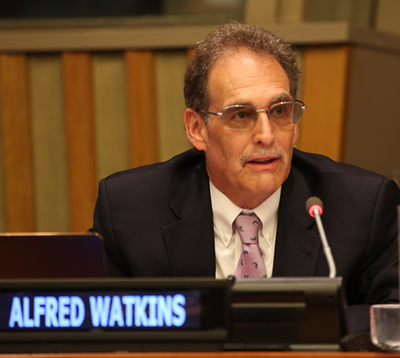Written byAlfred Watkins, Chairman of the Global Solutions Summit, Senior Advisor to the Global Technology Deployment Initiative and Senior Director of the P80 Group Foundation.
There is near-unanimous agreement that science, technology and innovation (STI) are indispensable for achieving the SDGs. But what precisely do we mean by STI for the SDGs?
I would argue that the objective of STI for the SDGs, especially for the least developed countries and the poorest strata in somewhat richer countries, is best summarized by Professor Ramesh Mashelkar’s phrase “More from Less for More or M-L-M.”
In other words:
More (performance) in the form of products whose performance and quality equals or exceeds those of goods and services consumed by the global middle class
For Less in the sense of a radical 90 or 95% price reduction compared to comparable products currently on the market; so that
More (people), primarily those at the so-called “bottom of the pyramid,” can benefit from the latest innovations.
Inherent in the M-L-M concept is the belief that scientific research, engineering, product design, and deployment are upstream and downstream components of the same process – namely, harnessing STI for the SDGs. R&D occurs at the upstream stage where scientists and engineers, focusing on the More From Less process, develop high-performance, low-cost technological solutions. As a result of these upstream research activities, we now have proven, effective, and affordable solutions for many of the most pressing development problems – off-grid, renewable energy, potable water, high quality, affordable health care, solar powered irrigation pumps, off-grid food storage, refrigeration, and processing, etc.
But R&D is only the first step in the long road from the lab to the SDGs. The indispensable next step – Less for More -- is transforming the fruits of these scientific discoveries into radically affordable products and services and getting them into the hands of the hundreds of millions of people in tens of thousands of urban and rural communities in dozens of countries.
This next step is where inclusive disruption occurs. A technology or a scientific discovery, by itself, is not inherently disruptive. In fact, the phrase “disruptive technology” is a misnomer. There is nothing inherently disruptive about technology unless it is used and deployed on a massive scale. Disruption, in other words, is a function of deployment, not something inherent in technology.
Disruption occurs when entrepreneurs develop innovative business models and harness the surrounding ecosystem to deploy that technology at scale in new, unique and inclusive ways. From the M-L-M perspective, deployment is not a scientific challenge, per se. Scientists, in all probability, will not play a leading role in deployment, although it is the fruits of their labor that will be deployed. Deployment is the domain of business models, supply chains, community organizing, product marketing, and finance. It is, at a minimum, the purview of entrepreneurs, community leaders, equipment vendors, logistics experts, payment mechanisms, finance for social enterprises and consumers, government officials, foundations, NGOs, social enterprises, SMEs, large corporations, and local universities who comprise the deployment ecosystem.
In some locales, critical pieces of this deployment ecosystem are missing entirely. In other locales, many of the constituent elements of a vibrant and effective deployment ecosystem already exist, but they are fragmented and disconnected, resulting in an ecosystem characterized by a series of broken circuits. The net effect of this fractured or non-existent ecosystem is that deployment efforts are less scalable and effective than they would be if potential partners could join forces and establish greater organizational coherence.
Scale is critically important in the STI for the SDG discussion. It is not sufficient to generate pilot projects that benefit tens or even hundreds of of thousands of people. The goal must be to deploy these solutions at a pace and on a scale commensurate with the goal of achieving the SDGs by 2030, or even a few years later. Measured by this yardstick, we are woefully behind schedule.
As the Global Solutions Summits have argued, more research alone will not close the SDG achievement gap. What is needed in addition are efforts to supplement the push for more and better targeted R&D with an even more vigorous push to build a more effective and efficient deployment ecosystem so that social enterprises, SMEs, NGOs, and foundations can reach more people in the countries where they are already working and, in addition, transfer their deployment know-how to more countries.
What must be done to ensure that the potential offered by science, technology and innovation towards achieving the SDGs is ultimately realized?
In the context of the UN Commission on Science and Technology for Development, the CSTD Dialogue brings together leaders and experts to address this question and contribute to rigorous thinking on the opportunities and challenges of STI in several crucial areas including gender equality, food security and poverty reduction.
The conversation continues at the twenty-second session of the CSTD and as an online exchange by thought leaders.


